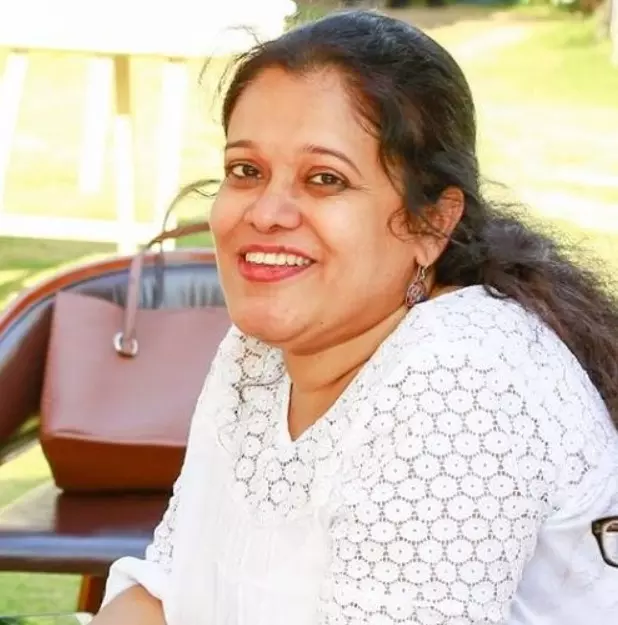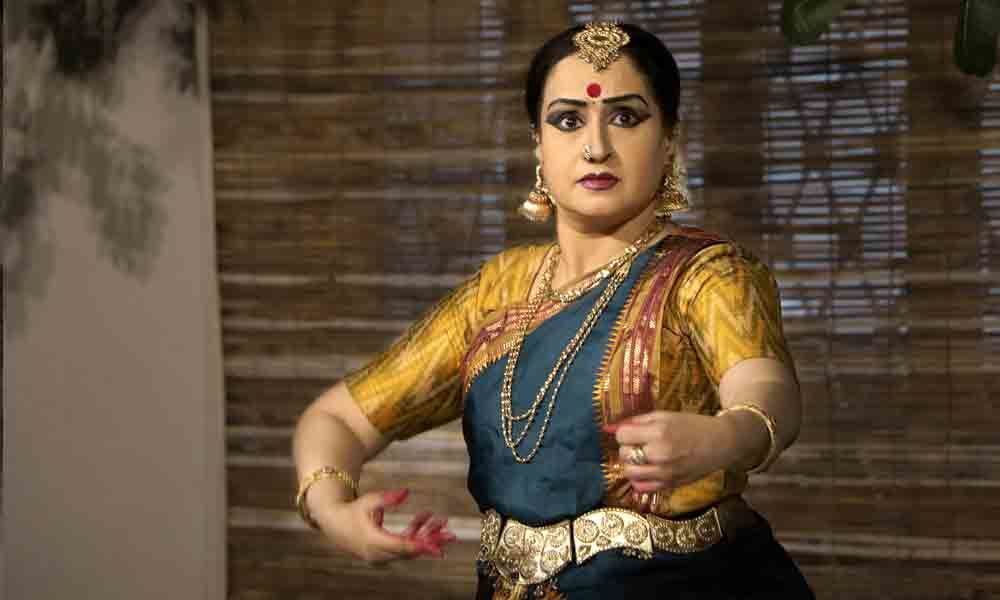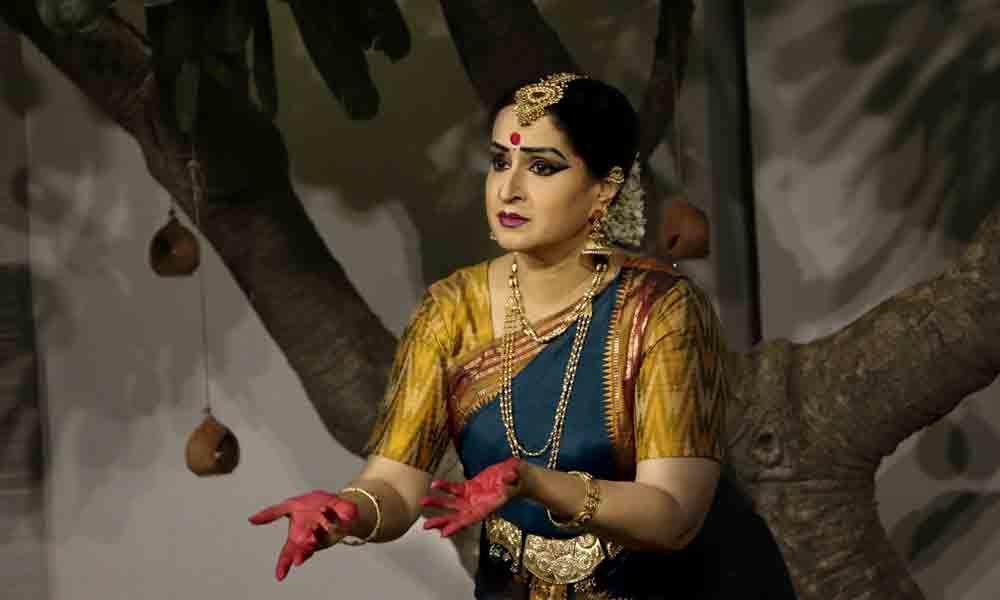Live
- G20 Leaders Will Talk About Climate, Taxes, and Trump's Return in Brazil
- COP29: CDRI announces $8 million funding for 12 projects to address climate crisis
- Anti-Telgu remarks: Actor Kasthuri Shankar moves court for bail
- Samsung AR Smart Glasses Set to Launch in 2025, Featuring Ray-Ban Meta-Like Design
- Kerala Industries Minister confident that new policy will boost plantation sector
- Madras HC plans inter-departmental monitoring committee to combat drug use in TN
- Bihar: Spotted deer dies due to heart attack in Banka district
- Mushtaq Ali T20: Shami to spearhead Bengal bowling attack, Gharami named captain
- Kharge's clarion call to oust Maharashtra's BJP-backed MahaYuti
- Why Ukraine’s Use of US Missiles Against Russia Could Lead to World War 3
Just In
Celebrating the sensual and the sublime

The abhinaya (emotive) - rich Kuchipudi repertoire is enriched with the unique form of poetry – Padam penned by legendary poets through centuries, each giving it their exclusive touch and style to the composition.
The 15th-century poets like Annamayya and Kshetrayya, especially, represented an era where the lyrics were sensual and sublime. Written in the Telugu language with its rich vocabulary adding beauty to the body of poetry, the Padams embodied eroticism, which was an integral part of spirituality until the Victorian era bringing in the educated class.
The later day connoisseurs and the dance and music performances that moved away from royal courts and temples leaned more towards spiritual poetry; however, Padam survived, and the later era poets brought in other embellishments to this unique form. Bhakti (devotion), exalting the many virtues of God (stuti), the extreme piety and intimacy with God bordering on criticism (Ninda stuti) and the philosophical take on life and the concept of renunciation (Tathvam) made their way into the padams.
One of the main proponents of classical dance until the modern era, the courtesans leaned extensively towards abhinaya, especially when they gave chamber performances. And their repertoire included many beautiful padams, several of those written exclusively for them. And when they performed, they expanded on their emotive skills displaying creativity in illustrating references and bringing up analogies drawing from their extensive knowledge of epics and nature.
Dance guru and researcher Anupama Kylash recently gave an engaging performance of well-chosen padams, preceded by a quick look back on each of the Padakavita poet she chose to showcase, which made for an educative and enchanting evening at Saptaparni, Hyderabad.
Regarded as the Andhra Pada Kavita Pitamaha, Annamacharya's sankeertanas and padams traverse the gamut of emotions and his pieces showcasing Sringara rasa (eroticism) embody the sensual layers of Telugu poetry that lent itself to beautiful performances by the Devadasis. To explain the concept, Anupama chose 'Valapula Daadi Vacche Vanithalara Marund Elagoleyana Joche nelaage' where Manmadha, the God of love proclaims his arrival and he brings along the bees, fragrant breeze, flower arrows and parrot as heroine feels she is under his seize. "Within the structure of this song there are pieces 'Nayika' remembers the 'Nayaka' and the physical union, which is the Sambhoga Sringara. When misses him, everything that is otherwise conducive starts to trouble her," relates Anupama bringing to fore Annamayya's style.
"He uses minute details to explain how the 'Nayika' suffers and encoded within is the journey of the seeker or the yogi. So, the 'Taapa' that the 'Nayika' experiences, is identical to the 'Thapas' (penance)," she adds.
With inputs from scholars Kamisetty Srinivasulu and Jayachandran Surendran, and Andhra Natyam exponent Kalakrishna, Anupama's understanding and interpretation of the lyrics re-introduced the exquisiteness of the works of the poets to the dance connoisseurs of the day.
Her rendition of Kshetrayya Padam, which is bold in its essence is a straight forward rendering of Sringara Rasa written for the Dasis exclusively. The lyrics go – "Magavaarike Inta, Mogamaatamayithe Maguvala Gati Emira", where the Nayika goads the hero and chides him for being shy and wonders what women will do if the men are so reticent. When Devadasis did their abhinaya they built upon ideas, brought in similes; there was a lot of hasta-based allegory and nature was used to make references - for example, the act of kissing is shown using flowers, bees, etc. Taking this tradition forward Anupama elaborated on the idea of this Padam by comparing the hero and heroine to the tree and creeper, the elephant and deer, and how it is so against nature for him to not accept her. The lyrics go on to say how older women make fun of her and other men preposition her. She also tells him not to think she is any less because she is approaching him first. Anupama, when she beautifully enacted the piece sitting in the quintessentially Vilasini style, peppering it with humour – it was a delight to watch.
"We had always worn the garb of sringara and spirituality with equal élan. We don't have a concept of sin; nothing is wrong, everything has its own way of being understood, appreciated, provided it is done in the right context. We have always celebrated eroticism in every way possible. Today, if you read 'Kamasutra', there is only one chapter dedicated to sexual positions. That has become the most important chapter around the world. Nine others speak of so many other aspects like the psychology of a man, women, sex education – all that is ignored," she observes.
Anupama went on to show the fifth song from the 'Adhyathma Ramayanam' as written by Munipalle Subramanya Kavi – where Rama is exalted as a divine being from the onset, and the song 'Ne dhanya naithini jagatprabho' is how Parvati feels immersed in the feeling of fulfilment after listening to the story of Ramayana as narrated by Lord Shiva. To the line – 'Swami nee che ne vinna ee charitamu navarasa bharitamu', Anupama narrated the 'nava rasas', but in a different way beginning with Vatsalya (motherly love) when Rama as a child asks for the moon.
Another interesting padam that the dance exponent chose was the Ninda Stuti by Sarangapani who earlier wrote a lot of erotic poetry bordering on lewd (in his own words) for the Devadasis. The poet from Kalahasti wrote 'Enta peda vaade' wondering how Lord Krishna must be so poor, for, he ate the atukulu (a fistful of flattened rice) from Kuchela, and surely if he had a good bed, would he sleep on a snake? The lyrics that evidently have a lot of scope for creative elaboration was much explored by Anupama.
What gave the evening a perfect end was the presentation of the Pothuluri Veerabrahmendra Swami's philosophy-based padam – 'Kaaseeki povalenaa, teerthamu mosukuraavalena'. The dance Guru used the Ardhanareeswara concept to answer the dichotomy of men and women, and Lord Shiva himself who is always with his family yet so detached and yogic in his practices to showcase the philosophical aspect of the rendition.
The Kuchipudi and Vilasini Natyam dancer and Guru is also the senior student of Padma Bhushan awardee Guru Swapna Sundari, who learnt the intricacies of courtesan dance from the last generation of the Vilasanis. Anupama like a true student did showcase what she learnt from her Guru, but in choosing to display her own interpretations and understanding of the Padams, she displayed innovation and creativity, and extensive knowledge of the craft and the related literature. In doing so, she kept alive the traditional rendering style of the Devadasis, a true torchbearer of the otherwise vanishing art.

© 2024 Hyderabad Media House Limited/The Hans India. All rights reserved. Powered by hocalwire.com








